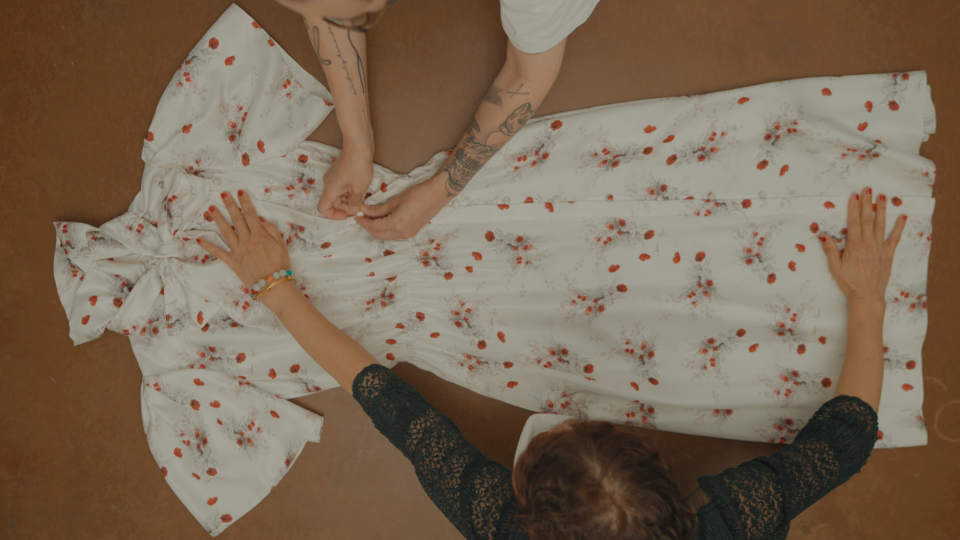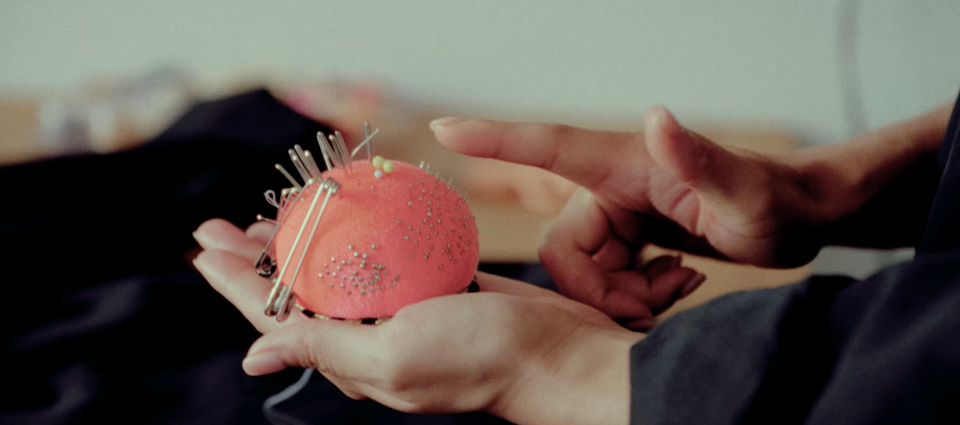New ‘Invisible Seams’ Documentary Gives Asian Makers the Mic

Compared to the air time given to fashion brands and creative directors, the behind-the-scenes makers of the remaining New York production houses are all but invisible.
But a just-released documentary hopes to change that narrative. The film touches on a number of misconceptions and challenges that still exist behind “Made in New York” fashion and shed light on the stories of women who power the industry.
More from WWD
The 17-minute film was directed by Brooklyn-based filmmaker Jia Li, director of photography and founder of Hi-Lo.tv Production, who is also behind the six-minute docushort “Spicy Village” (which served as a jumping-off point for the film), and HBO show “Take Out” with Lisa Ling. Fashion industry veteran Jodie Chan served as executive producer for “Invisible Seams” with a number of people aiding to its production and translation.
“This is a human interest story, not an Asian story,” Chan, who initiated the project, told WWD. “Of course, I think this is just a small part of the industry, and there’s so many other people — Latina patternmakers, Indian embroiderers — whose stories should continue to be shared. In this moment, we felt it was very important to put this specific story together to celebrate these women who have done so much for the industry. They deserve this moment.”
“Invisible Seams” shares the stories of eight Asian seamstresses and patternmakers in New York’s Garment District, centering their experiences as front-line workers in fashion. Weathering the pandemic, the steep rise of anti-Asian hate crimes in the area (a 73 percent increase last May), trials of immigration and the incessant demands of fashion, the film is a celebration of endurance, expertise and sacrifice.
“We romanticize the Paris ateliers but we think of Asian workplaces as sweatshops. That’s what really struck me,” said Chan. “I work in communications, so I know when we pitch things it’s about the designer: It’s the brand, but we forget the women behind the scenes who helped it get to the red carpet or wherever it needed to be. It takes such a huge team of people to make the sketch become a reality. Even if it’s not just about Asian women — this is a part of the industry that’s really worth celebrating.”

Courtesy
It was one moment, in particular, that served as a catalyst for the film.
“For me, personally, the shootings in Atlanta [last year, which were a targeted, deadly attack on Asian spas] really triggered me. I wanted to translate my feelings into something actionable. I also signed up to be a volunteer and mentor for the [Asian Professional Exchange] APEX community,” Chan said. “I came to work up close and personal with these ladies, and they have an abundance of stories in their personal lives.”
It was the rising hate crimes in the Garment District that validated the thesis for this project and accelerated Chan’s urgency.
Chan has been on the periphery of fashion, and this particular story, her whole life. Both of her grandmothers were seamstresses in Hong Kong. Speaking to the strength, tenacity, wit and sass that the women in “Invisible Seams” play out on the screen, Chan emphasized: “All of them are really proud of their craft and their work. They see it as a vocation and they’re proud of it.”
Business owner Yaqi Sun of Atelier YQS pursued patternmaking, following along in the footsteps of her mentor and couture-trained patternmaker Nicolas Caito and cofounder of Atelier Caito, and has now put herself in “high demand,” in Chan’s words. “They chose to pursue this vocation. Yaqi chose to be a patternmaker. Now designers rely on her in a very different way,” said Chan.
There were a number of stylistic elements about the film that contributed to the dialogue, which director Jia Lia spoke to. Referencing continuity between her previous films, Li said, “It was important to me to take the elements of ‘Spicy Village’ and tell an authentic story. Take someone who is not a native English speaker and convey everything she wants to convey. First and foremost, we have to be true to the women in this film. We ended up translating this film into both Chinese and Korean.”

Courtesy
“I actually don’t know anything about fashion besides wearing clothes and some taste in what I wear,” Li confessed. “That [industry] complexity is what we were trying to convey in this film. There’s cultural nuance and other attributes that may mean that someone gets a different job than someone else. There’s language [barrier] issues that this film touches on…but the reality that Asian women or garment workers can only do one sort of job [is wrong].”
Given the heightened interest of labor unions among the American public today, Li is hitting on a timely moment. “I don’t speak of it as an activist point of view. I am just deeply interested in labor, and what it is that motivates people to come in to work every day.”
As for what happens next, the fashion industry can anticipate a Chinatown screening of “Invisible Seams” on June 24, which is the 40th anniversary of the 1982 garment worker strike in which more than 20,000 (mostly Asian American women) garment workers gathered and won a fight for better conditions and wages.
The film has also been entered into film festivals including the New York Film Festival and Toronto International Film Festival, among others, but is available on Vimeo now.
Sign up for WWD's Newsletter. For the latest news, follow us on Twitter, Facebook, and Instagram.

